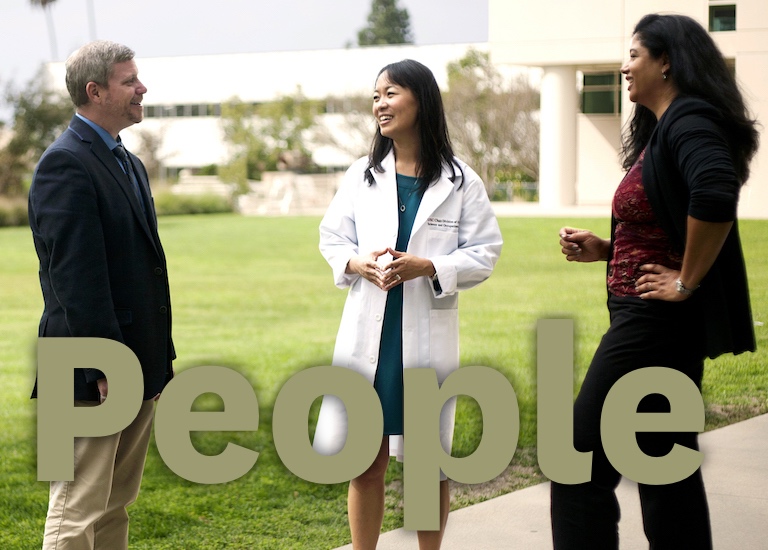Student Blog
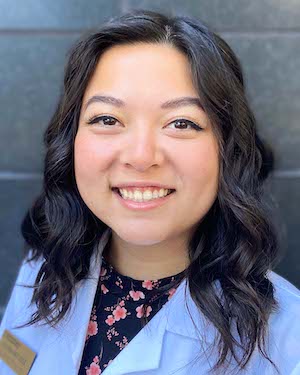
Better Late Than Never: The MA ’22 White Coat Ceremony ⟩
October 7, 2021, by Alyssa
The White Coat Ceremony for the entry-level-MA class of 2022 felt like a long time coming. With everything moving to Zoom, many of us were concerned that our ceremony scheduled for August 2020 would also end up in the virtual void. Luckily, my class voted to postpone the ceremony instead.
Speaking honestly, I had not been looking forward to the white coat ceremony. You can’t look forward to something you didn’t know about. So at first, missing the experience did not feel like a big deal. Upon learning more about the meaning behind the ceremony as the uncertainty loomed, I felt more and more disappointed. The White Coat Ceremony is a tradition to induct and welcome occupational therapy students into the profession — what a sad thing to miss out on.
We were sent our white coats in the mail. Since we could not try on samples in person, the division had a few students from the class of 2021 virtually show us their different sizes of coats so we could make our best guesses for our sizes (as you can imagine, the accuracy of our guesses were mixed). Opening the white coat package felt like it should have been a big moment, but honestly, it felt kind of empty. I wished I was receiving it with my classmates, most of whom I had only ever seen shoulders-up in a Zoom screen box.
The limbo of if/when the ceremony was going to happen felt endless. A whole year later, in July 2021, we received the save-the-date email — it was finally happening! On a very warm late August day, under a huge tent on the lawn outside of CHP, the excitement was palpable. Dr. Rafeedie stepped on the stage 5 minutes before the ceremony even started to set up water bottles and everyone started cheering. After a hard year of online/hybrid classes and fieldwork, the class of 2022 got our in-person ceremony surrounded by our friends, family, and faculty. My voice felt croaky afterward from cheering my friends on.
I can’t speak for the rest of my class, but I think the ceremony would have felt really different if we did it at the beginning of the program. Doing it in the middle of the program was an opportunity to look back, look ahead, and look around at all of the friends and colleagues I have come to appreciate so much over the last year. It was definitely worth the wait.
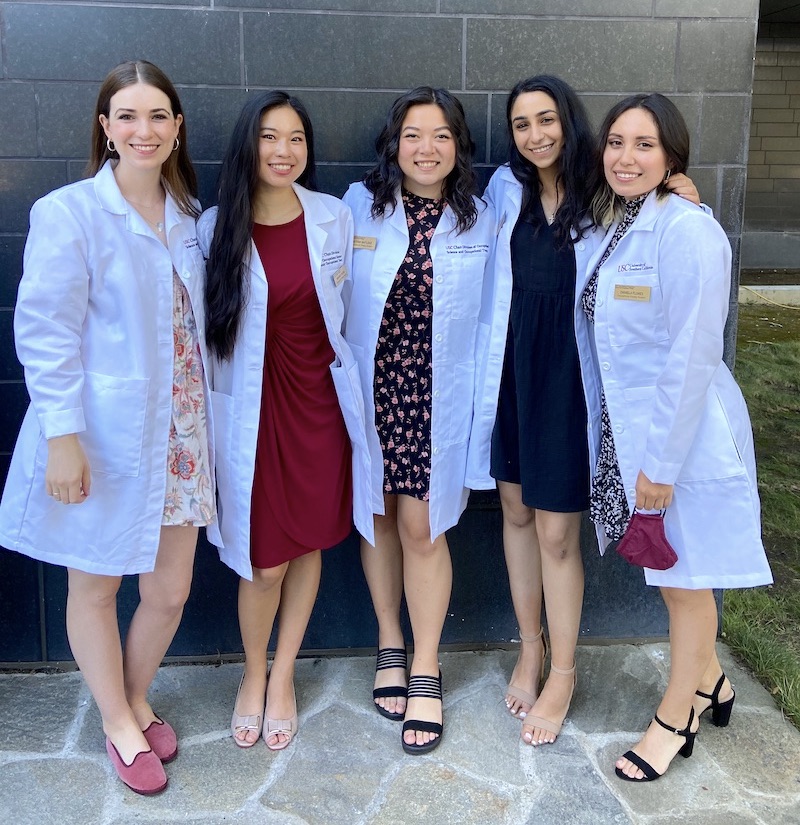
MA ’22 friends left to right: Elizabeth “Lizzo” Bowers, Maggie Young, Alyssa Matlosz, Mariamme Ibrahim, Daniela Flores
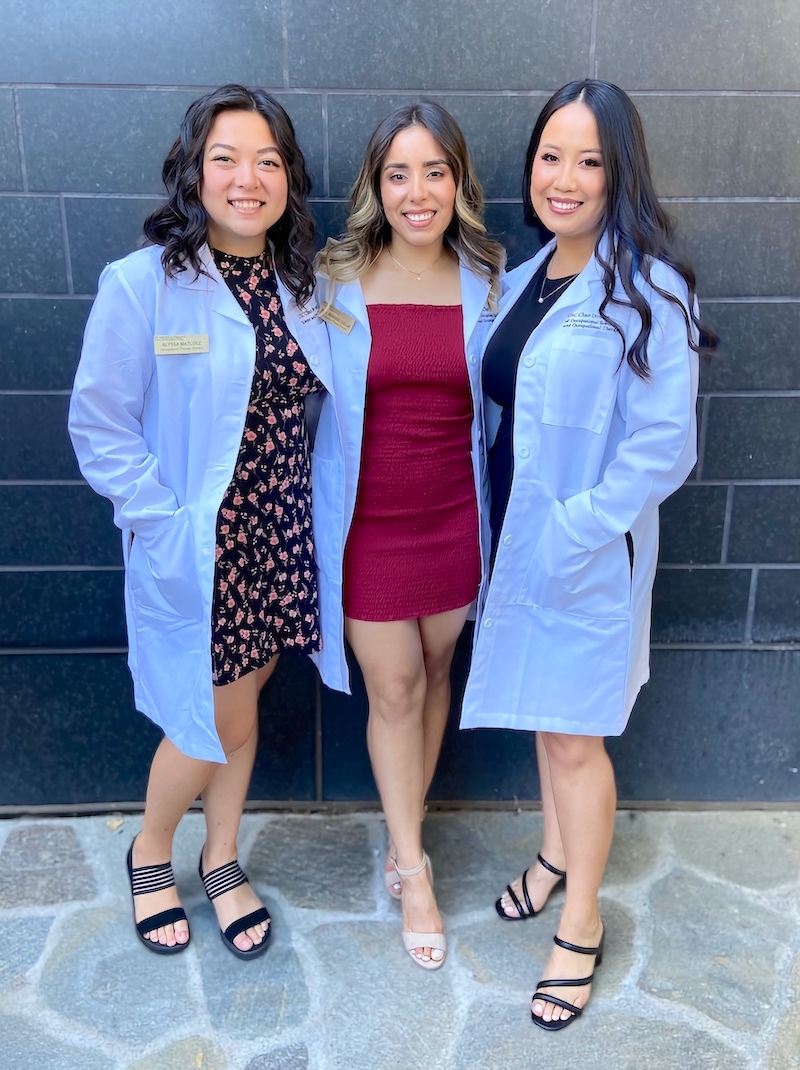
With my fellow Chan student ambassador friends Silvia Hernandez Cuellar and Teresa Pham
⋯
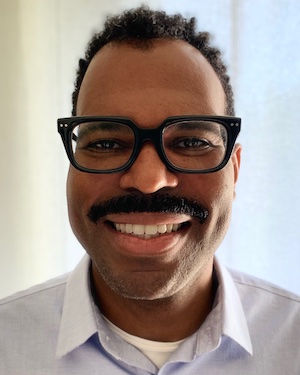
How to go to OT graduate school after being out of school for a long time — Step 2 ⟩
October 5, 2021, by Guy
Step 2 — Managing your time and money as you prepare to apply to graduate school
If you read my last blog, you know the classes you need to take and are starting to get some idea of some of the other requirements you need to complete to apply to graduate school. (Oh, if you don’t know about those other requirements like finding volunteer/observation hours with an occupational therapist, or finding people to write your recommendations, I’ll touch on those in my upcoming blogs.) So, now what? You need to come to terms with how this change will impact your time and money. Below is what I did, but you may decide to do something different. Remember to do what works for you. You do you!
Before I even took classes and while I was working full-time, I mapped out a timeline for how long it would take me to complete all the requirements to apply to OT graduate school. I looked at all the schools where I was going to apply and found the one with the earliest deadline and worked backwards to make sure I would complete everything by that deadline. (Side note — I failed to make that deadline — whoops, life happens. However, in retrospect, no big deal because that mistake led me to be here!) Next, I thought about what I would be doing while I was waiting to find out if I got into grad school (usually about 3-4 months of waiting), and I thought about what I would do in between getting into graduate school and going to graduate school making sure to factor in moving. I also made a contingency plan for if I didn’t get into graduate school the first time. (I didn’t make plans for applying more than two times. That was me and you might feel differently.)
In the end it took me approximately 22 months to complete all the requirements to apply to graduate school, and then an additional 6 months until I started school. During the first year, I worked full time and took one class each semester. Financially this was manageable because my classes were very inexpensive, and I still had a good income. In terms of time, it had very little impact on my work week. Once a week I went to class for 3 hours at night right after work. While the class time was manageable, it was an adjustment to my weekends. Now Saturdays and Sundays meant studying or doing assignments. I hadn’t been to school in so long; my studying skills were rusty. Also, getting used to Blackboard and submitting work online was a bit strange. My first written assignment I printed it out and tried to turn it into the teacher — whoops.
During my second year, I got a part-time job, and started taking two classes a semester while also volunteering/observing at least 8 hours per week. Six months or so before leaving full-time work for part-time work my partner and I examined our expenses then and came up with a household budget that could be sustained not only once I went part-time but also when I went to graduate school. We basically came to an agreement about what my piece of the pie had to be while going back to school. While my income would be less, working part-time in the service industry gave me so much more time to study and more importantly gave me the chance to see occupational therapy in action so that I could get a better understanding of the profession. Once I finished the application process, over the next 6 months I continued to volunteer, and I also worked as much as possible to save, save, and save more. Fortunately, I did not have to factor in moving because I moved prior to applying to graduate school where there were schools that I had been considering applying to anyway. (My partner and I decided to move before I even started the application process because we wanted to be closer to family.) However, after talking to many of my classmates who had to move across country once they found out they got in and during a pandemic, I will say this, DO NOT underestimate the amount of time, money, and mental head space that goes into a move. Not that moving is ever easy but moving to a city like Los Angeles and figuring out the housing situation can be very hard to navigate. FYI — Reach out to me or another ambassador if you are from out of town and thinking about going to USC. We can give you some ideas about where students live and how much it costs to get a place in LA.
I never imagined going back to school let alone getting myself together to apply to graduate school because it seemed almost insurmountable. I didn’t have the time or the money. Also going from working adult to student with no money seemed like a far stretch of the imagination. After one year into going back to school, I recall sitting in one of my community college classes after working a night shift at the restaurant and thinking here I am in my forties, I said to myself, “What am I doing?” Well, I’ll tell you what I’m doing, and what you might be starting to do too. Learning and changing! Has it been hard? Yes! Has it been worth it? Absolutely! As we occupational therapy students have learned, don’t forget to break it down into manageable steps, chunk it up! Give yourself the time and space to make the insurmountable doable. Then get it done!
Quick note if you have a partner —
Although I had the full support of my partner during this time, I needed to redouble my efforts to consistently consult with them about what I was thinking about doing. I also needed to actively listen to their ideas and feedback, and to remain steadfast in collaborating with them to do things that would work for the both of us. Despite my best efforts, I didn’t do this so well. Like the time I came back from my first day of community college and said, “I think it would be best if I stopped working and just took classes.” At which point my partner said, “Best for who?” Fortunately, I have a very understanding partner who gives me numerous opportunities to work on things together . . . So, before you make any plans about your time or money as you prepare to apply to occupational therapy graduate school, listen to your partner, make sure you and your partner are on the same page, and above all else remember this is a big change for them too.
⋯
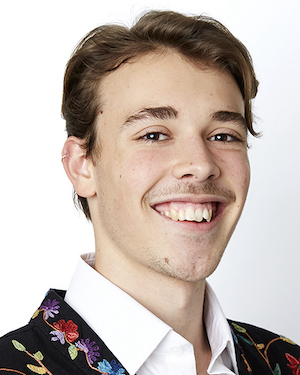
Lessons from Smash Mouth: My Time at SSO ⟩
October 4, 2021, by Seth
“The years start coming and they don’t stop coming”
It’s like they, “they” being notorious rock band Smash Mouth in their hit single “Allstar”, always say, “the years start coming and they don’t stop coming.” For example, take my time at the Chan Division. I entered USC’s BS-MA program five years ago and in the blink of an eye, I’m almost at the finish line. If we’re being honest, it’s actually 31 weeks away from the finish line, but really, who’s counting? 31 weeks to go doesn’t just mean graduation, it also means the future (AKA: the time to get my life together by and FAST)! As my next life stage looms in the distance, I did the one thing anyone else in my position would do: I stressed about it for a couple days until the universe sent me a sign (well, an Instagram DM).
“You’ll never know if you don’t go”
As it turned out, a mentor who knew I was looking for my next big break decided to pass along the information for an upcoming event, the Society for the Study of Occupation’s (SSO) “Occupation and Gender” virtual conference. For those of you who don’t know, I was an LGBTQ+ studies minor in undergrad. When I wasn’t doing OT, I was doing gender studies. Even when I’m doing OT now, I’m usually doing gender studies at the same time. With the future looming, I was starting to realize that I wanted to explore the socio-cultural aspects of OT more explicitly in the future and with that being said, this conference was made for me. When I needed it most, it simply appeared in front of me on a silver platter! Talk about serendipitous timing, right? Now that I knew it was out there, it was time to get to work, after all, “you’ll never know if you don’t go!”
“I ain’t the sharpest tool in the shed”
Later that week, I emailed the Chan Student Leadership Awards Committee to make a case for my attendance (including, but not limited to, bringing and sharing the information back to my fellow OTs for OuTreach members) and I secured the funding. From there, I just had to wait two weeks until the conference went live. What that really meant, however, is that I had a whole two weeks to think about how nervous and unprepared I was! This was going to be my first conference, my first foray into the world of OT outside of my five-year ivory tower residency (albeit a conference is basically within that tower’s property) and with each passing day I was worried that I wasn’t going to belong. Remember when I said the conference was made for me? Yeah, you can forget about that! All I could think about was how “I ain’t the sharpest tool in the shed!”
“You’ll never shine if you don’t glow”
Fast forward to the day of the conference and not much had changed except for the fact that I was now very aware that I was just a student amidst the leaders of contemporary occupational science. The conference was laid out so that I could asynchronously review poster sessions (AKA things I could prepare myself for beforehand) throughout the week and then tune in live for synchronous paper presentations and their joint discussion sessions (AKA being thrown in the deep end). I started off breezing through the poster sessions and then tuning in to the theme speaker to build some confidence. From there, I pushed myself out of my comfort zone and joined the conference mixer, got thrown into a breakout room, and became a face others would recognize throughout the conference. Objectively that was a good thing, but subjectively it meant I couldn’t get by turning my camera off and staying on mute. You win some, you lose some. Regardless my day was off!
I scheduled myself for eight sessions that day and halfway through disaster struck. Someone directly asked me if I had any thoughts on the topic at hand. I shook my head, laughed a bit, and typed in the chat, “I’m just a wallflower at the moment!” and the conversation carried on as if nothing had happened. But, spoiler alert, I actually understood what they were talking about and at times even thought before them what to say! It was almost as if the past five years weren’t just for fun. After I finally caught on that I could be a competent conference attendee, I decided it was time for that wallflower to bloom. I missed my opportunity, but I wasn’t going to miss it again. “You’ll never shine if you don’t glow” right, Smash Mouth?
“So much to do, so much to see”
With renewed vigour, I was on a mission to be heard! There was “so much to do, so much to see” and I was no longer content to watch it go by. During the next session, I shared a some insights on incorporating gender theories into occupational therapy curricula. I followed that up by asking four whole questions in a session on the environmental impacts on gender identity (and, I might add, stayed after the session to talk with the authors). The cherry on top of the day was when I gave a suggestion for additional research that the author actually wrote down!
“Hey now, you’re an all-star”
I won’t bore you with the rest of the details, but I will say that I carried that energy with me until the end of the conference. Although I am taking everything I learned from the conference back into the classroom and future practice, the most valuable thing that I took from that weekend was that I belonged in that space. It was the first time I ventured into the world of occupational therapy unsupervised and it showed me that I was ready for whatever is in store for me 31 weeks from now. Although we all live different lives with different experiences, know that you’re also ready for what is to come 31 weeks from now. You are prepared, you belong, and if you ever doubt it just remember, “Hey now, you’re an all-star.”
⋯
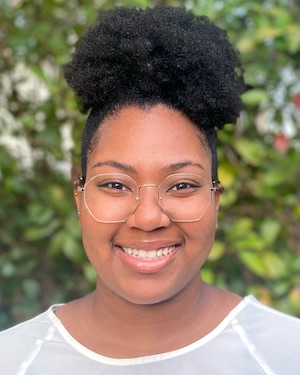
So You Made The Decision . . . Now What? ⟩
September 30, 2021, by Kayla
Admissions Beginnings and Endings
Am I Really Doing This?
I’ve always found a reason to stay pretty close to home; for undergrad I only strayed about 45 minutes down the 210 (including the time added on by traffic) and then I thought I was really stepping out on my own when I moved to LA for grad school at USC. So with that background information, you can imagine the shock that my family and friends felt when I said the words, “I’m moving to Chicago.” I had a hard time wrapping my head around the reality of the decision I had just made as well. Truth be told, I was in denial for a while, but after the denial came acceptance . . . then came stress.
Feeling All The Feels
Stress. It doesn’t discriminate between positive and negative things, it just happens. So while I was excited that it was almost time to actually set off to Chicago, my mind was constantly racing thinking about all of the things that I still needed to plan/organize/do.
Anxiety. It can happen even if we can rationally think through our problems, sometimes that alone just isn’t enough. The OTD program follows a traditional schedule, beginning in late August; I was not set to start the clinical portion of the program until September 20th! And while I knew that the program is designed to be flexible to these very situations, I was worried that I was somehow falling behind. I had to remind myself that this is MY journey and that comparison is nothing but the thief of joy.
During this phase, I really had to believe that everything would come together, be confident that I was prepared to handle the changes coming my way, and more than anything remember the reasons why I decided to complete the OTD.
Strength in Goodbyes
As the time came closer for me to load up a moving truck and drive across the country, I started reflecting on all of the reasons WHY I stayed so close to home for so long. The two most prominent being my family (including my two nephews that I absolutely adore) and the remarkable group of people I get to call my friends. I made sure to be intentional about spending time with my loved ones (and eating as much delicious California food as possible) before I left. The love and support they poured into me made it so clear that no matter where I went, or how far I was, I would not be going through this year alone.
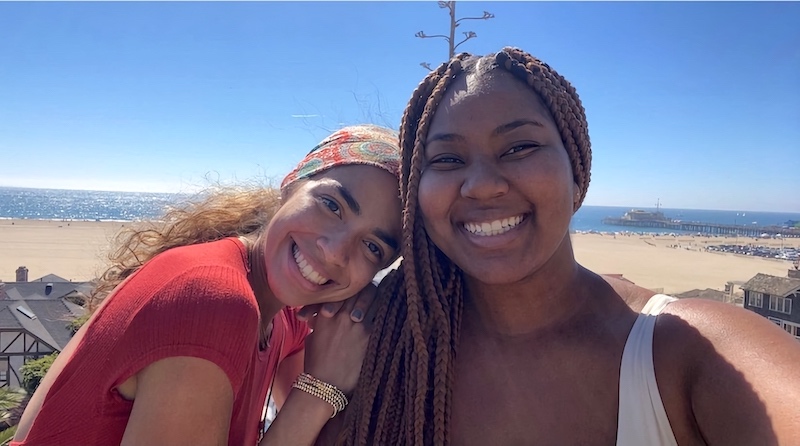
Lunch in Santa Monica with Guarina
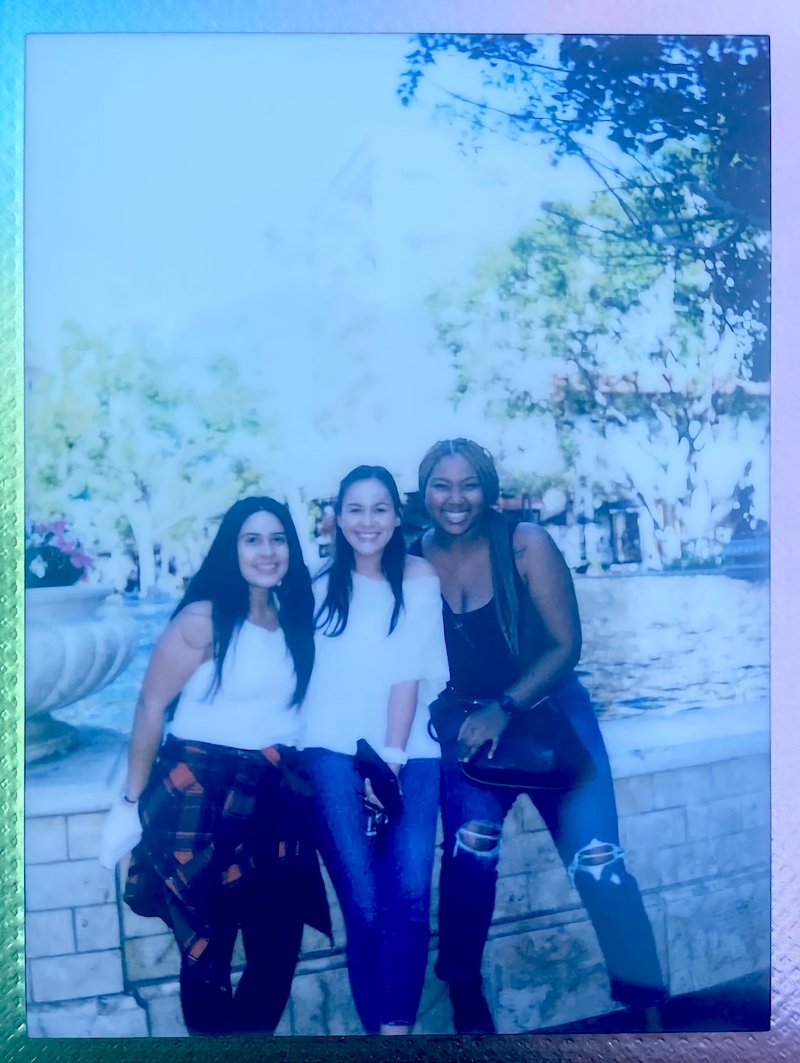
A polaroid with my classmates, Kim and Alex
No Turning Back
2,000 miles, 35 hours, 7 states, 3 days, and 2 AMAZING parents that dropped everything to traverse the country with me in a moving van. As we put more miles behind us and got closer to Illinois everything became real and (despite a quick moment of apprehension somewhere in the middle of Oklahoma) I finally felt ready.
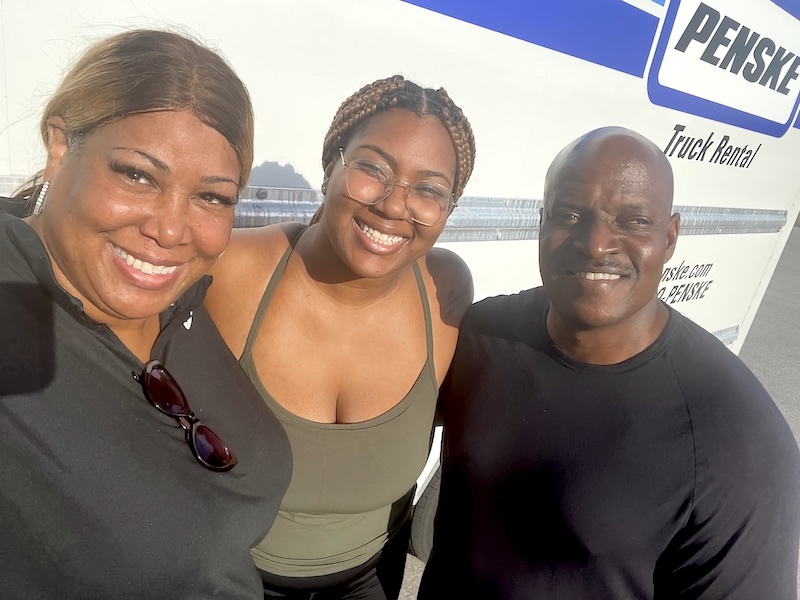
Last day of our road trip!
I wanted to share this with you all because I know that this is the time when you are making some pretty big decisions about your future and it can feel like there are so many unknowns ahead of you. If there is one thing that I have learned thus far in this experience is to not let that stop you from taking a chance on yourself. As deadlines are approaching keep that in mind, because you never know, it might be turn out to be everything you hoped for, good luck!
⋯
Perspectives of a Post-Professional MA to OTD Student: Amy Yeu ⟩
September 29, 2021, by Global Initiatives Team
Classes Externships International
Su-Min (Amy) Yeu, OTD
By Michelle Plevack
Entry-Level Professional Master’s student
In collaboration with Maggie Chen and Prutha Satpute
Global Initiatives OTDs
Editors Alison Chang, Vanessa Elshamy, and Brittany Inouye
Entry-Level Professional Master’s students
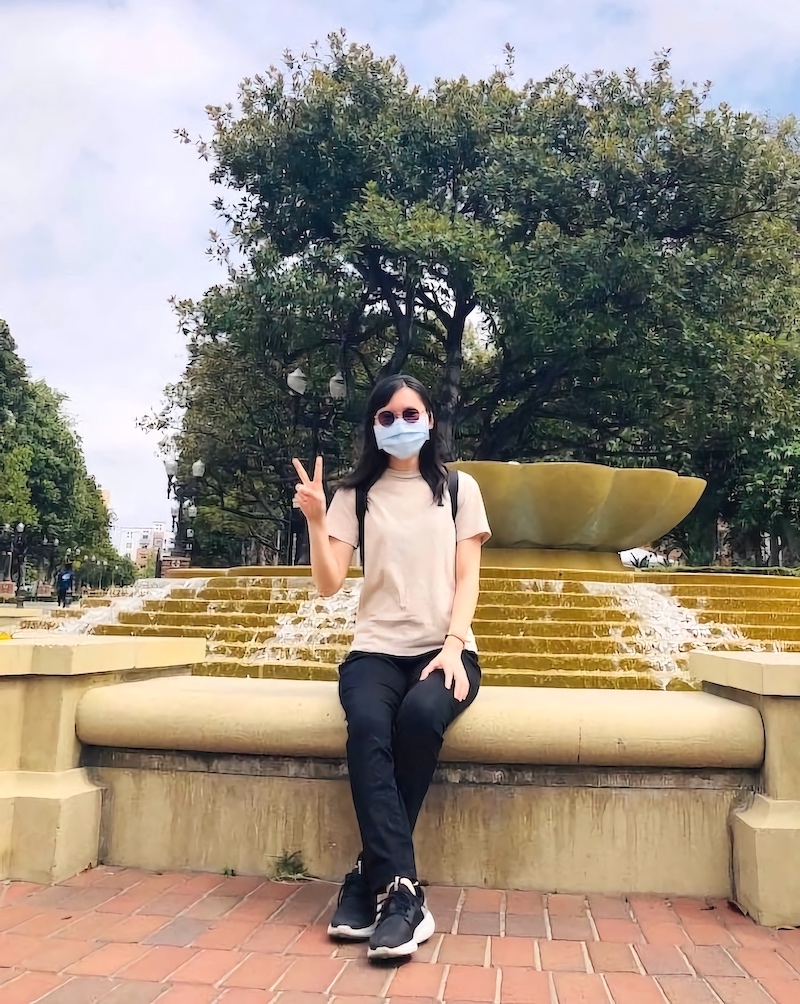
First photo Amy took at USC — OTD, Fall 2021
Global Initiatives OTD Maggie Chen had the opportunity to interview international student, Su-Min (Amy) Yeu. Michelle Plevack wrote this blog with the purpose of sharing Amy’s perspectives of her transition from USC’s Post-Professional Master’s Program to the Post-Professional Doctorate of Occupational Therapy (OTD) Program.
What are some of the factors that influenced your decision to continue your education with the OTD?
Amy: I considered professional, personal, and program aspects. Professionally, I thought about my future career and my goals. As an international student, I thought about what I was interested in but could not learn in my hometown. For example, I know that OT in the United States focuses on health promotion, an area I am interested in. I also thought about the timeline and pathway that I am going to take in the future. For example, when am I going to do the OTD and how long is the program going to be?
Personally, I hope to return to Taiwan. I also thought: if I am not going to do the OTD, then what am I going to do? Am I going to work in the US or am I going back to Taiwan? I also thought about the difference if I did not have the degree: is it only because I want to earn another credential, or is there anything else that is important to me? Another thing I considered was employment, of course. Like many students, I have concerns about paying tuition and looked into residencies that might offer a scholarship or stipend for me. As far as personal goals, it was important for me to travel abroad and to gain new experiences in the US.
Considering programs, I was interested in non-traditional tracks that focus on health and wellness and international relationships. I know at USC they have clinical, research, administration, and pedagogy tracks. I ended up being placed with the Kortschak Center for Learning and Creativity (KCLC — clinical track) at USC which I am very grateful for, and I know at USC, I can choose to have a subspecialty — in research, for example — that could contribute to my career goals.
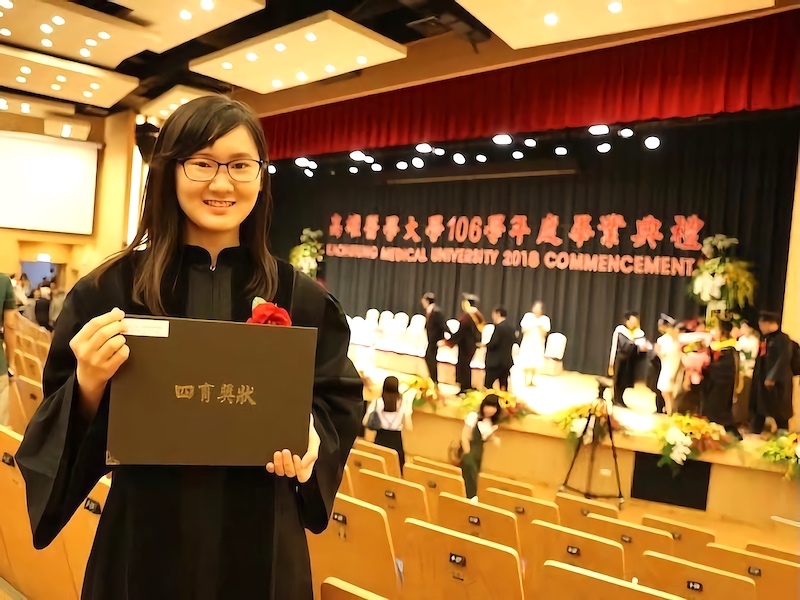
Commencement: Kaohsiung Medical University; Kaohsiung, Taiwan — Senior, 2018
What goals have you set for yourself during your OTD? Why is the OTD beneficial to your future goals and career?
Amy: I want to network and build relationships within the USC community and improve my clinical skills by utilizing my therapeutic use of self, motivational interviewing, and evidence-based knowledge. With these skills, I can not only provide services appropriately, efficiently, and holistically to all students, but also appropriately refer students to other services. As I know these services are not currently popular in Taiwan, I hope to show the efficacy of the services at KCLC by conveying the unique roles and skills of occupational therapy and academic coaching services in universities. My future goal is to improve the quality of life of university students in Taiwan, particularly as a result of the COVID-19 pandemic, by implementing and developing novel ideas into on campus services. I believe having a doctorate level of education at international conferences will allow me to effectively advocate for essential services and pioneer the roles of OTs working in universities.
How has the transition from Post-Professional MA to OTD been?
Amy: This transition looks different depending on what track you are taking. For my clinical track, I spend most of my time in my residency at 20 or 40 hours a week. Compared to being an Post-Professional MA student, your role changes as an OTD student, as you are ‘in the driver’s seat’ where you need to be self-directed, proactive, and create your own structure to support your goals. However, because I am more settled into my role after the MA program, I feel less anxious and confused, and even excited about my coursework. Consequently, compared to being an MA student, there are fewer social opportunities with peers due to the nature of the coursework for the OTD program.
What has been the best and hardest part of the OTD so far?
Amy: The best part is my residency — I feel like I am seeing the endless possibilities of occupational therapy. There have been so many opportunities during the process of integrating my knowledge, experiences, and passions in a way where I am ‘learning by doing’. I get to wake up excitedly, not only because of schoolwork, but also because I am pursuing my dreams while collaborating with people who share the same goals, values, and beliefs. Some difficult aspects of the OTD for me as an international student are the language and cultural barriers, particularly while sharing thoughts. I am still figuring out how to provide services and express my perspectives with the KCLC team in an effective and efficient manner. Due to the cultural differences between myself, clients, and peers, I am also not always familiar with a place or experience they might reference to. Finally, learning to be more flexible due to the uncertainties of the pandemic, such as adjusting to hybrid services, has been a challenging transition as well.
How have you been balancing leisure and personal time with OTD responsibilities?
Amy: I try to be patient and kind to myself. Luckily, I work in a residency that promotes the importance of work-life balance and recommends us to not bring work home. I also try to focus on self-care activities, setting up short breaks, making time for myself, journaling, having snacks, listening to music, catching up with family, and socializing with friends on weekends.
What advice would you give to students about the OTD?
Amy: For those indecisive about the OTD, I would recommend connecting with professors, residents, and other peers who are interested in discussing the OTD. In my experience as a MA student, it can be hard to decide one month into the program if the OTD is right for you. And even though I am very satisfied with my residency, I regret not applying to even more sites! Remember that post-graduation, you do not need to stick to whatever you do for your OTD. If you are planning on doing the OTD, consider what you want to get out of this program. You won’t regret it! Keep dreaming big! Jot down your thoughts, journal, and think deeper. Remember there are no restrictions with what you can do with an OT background. Consider being open to roles or positions not necessarily called OT if they relate to your passions.
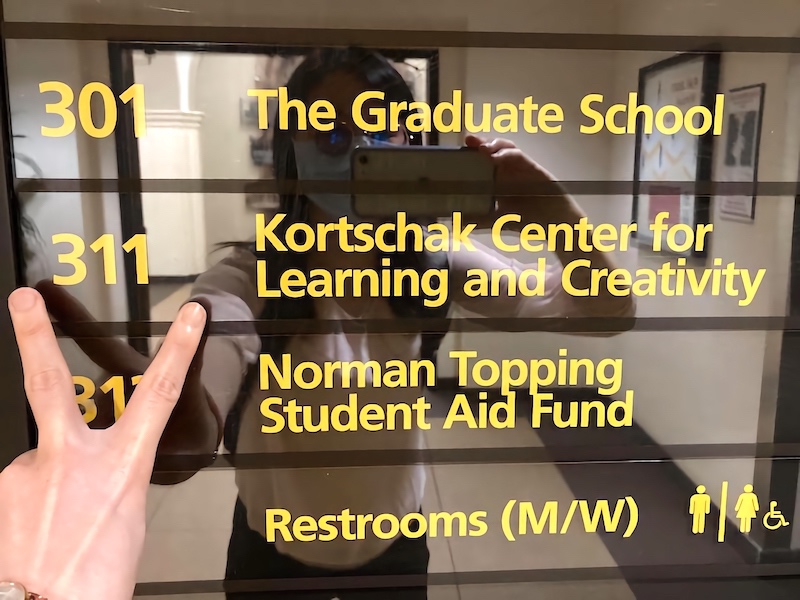
Amy’s residency: USC Kortschak Center for Learning and Creativity; Los Angeles — OTD, 2021
⋯





